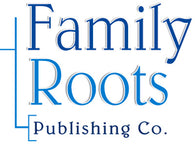
The German Emigration from New York Province into Pennsylvania, Excerpted from Part V of Pennsylvania. The German Influence in Its Settlement and Development - A Narrative and Critical History
The German Emigration from New York Province into Pennsylvania, Excerpted from Part V of Pennsylvania. The German Influence in Its Settlement and Development - A Narrative and Critical History. The Pennsylvania-German Society Proceedings and Addresses, Volume IX; by Matthias Henry Richards; 97 pp.; Paperback; Published: 1899; Reprinted: 2007; ISBN: 9780806348537; Item # CF9386D
During the final decade of the 17th century, 14,000 emigrants fled the war-torn region of the German Palatinate seeking safe new homes under the rule of the British Crown. In consideration of their plight, the English government opened up land in New York's Mohawk Valley, among other places, for 4,000 Palatines. By the spring of 1714, for example, there were 150 Palatine families settled around Schoharie, forty miles from Albany. In 1723, however, owing to a number of land disputes between the settlers and local authorities, a number of these German families ultimately chose to abandon New York for the Province of Pennsylvania, a phenomenon which forms the basis of this historical essay.
This then is the story of the famous Tulpehocken settlement in Berks County, northwest of Philadelphia, which was spearheaded by John Conrad Weiser (1696-1760). Just as they had in New York, the Tulpehocken Palatines had to negotiate with the Proprietors of Pennsylvania and the indigenous population before they would be able to take control of their lands, an account narrated by Rev. Richards and evidenced by the facsimiles of original correspondence. Other chapters discuss the Palatine style of settlement and their flourishing farms, efforts to construct the first churches and schools, Indian wars, and the founding of towns and cities, such as Wernersville, Sheridan, Myerstown, Lebanon and Rehrersburg. Special consideration is given to the lives and homesteads of the Palatine patriarchs Weiser, Daniel Steinmetz, Isaac Levan, John Caspar Stoever, Reverend Tobias Wagner, Henry Melchior Muhlenberg, and others. In short, this is critical reading for anyone interested in the history or genealogy of what is commonly referred to as the Pennsylvania Dutch country.
During the final decade of the 17th century, 14,000 emigrants fled the war-torn region of the German Palatinate seeking safe new homes under the rule of the British Crown. In consideration of their plight, the English government opened up land in New York's Mohawk Valley, among other places, for 4,000 Palatines. By the spring of 1714, for example, there were 150 Palatine families settled around Schoharie, forty miles from Albany. In 1723, however, owing to a number of land disputes between the settlers and local authorities, a number of these German families ultimately chose to abandon New York for the Province of Pennsylvania, a phenomenon which forms the basis of this historical essay.
This then is the story of the famous Tulpehocken settlement in Berks County, northwest of Philadelphia, which was spearheaded by John Conrad Weiser (1696-1760). Just as they had in New York, the Tulpehocken Palatines had to negotiate with the Proprietors of Pennsylvania and the indigenous population before they would be able to take control of their lands, an account narrated by Rev. Richards and evidenced by the facsimiles of original correspondence. Other chapters discuss the Palatine style of settlement and their flourishing farms, efforts to construct the first churches and schools, Indian wars, and the founding of towns and cities, such as Wernersville, Sheridan, Myerstown, Lebanon and Rehrersburg. Special consideration is given to the lives and homesteads of the Palatine patriarchs Weiser, Daniel Steinmetz, Isaac Levan, John Caspar Stoever, Reverend Tobias Wagner, Henry Melchior Muhlenberg, and others. In short, this is critical reading for anyone interested in the history or genealogy of what is commonly referred to as the Pennsylvania Dutch country.
